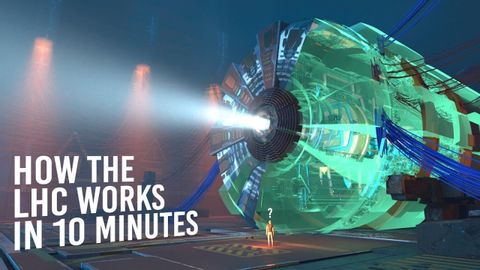10分でわかる大型ハドロン衝突型加速器の仕組み (How the Large Hadron Collider Works in 10 Minutes)
Stylish Rolling Controller が 2024 年 06 月 01 日 に投稿  この条件に一致する単語はありません
この条件に一致する単語はありませんUS /ˈslaɪtli/
・
UK /ˈslaɪtli/
- v.i.重要な位置を占める
- n. (u.)物質
- n.事柄
US /ˈpɑzɪtɪv/
・
UK /ˈpɒzətɪv/
- adj.肯定的な;確実な;電気のプラス極;よい;陽性の;楽観的な;正の;ポジ
- n.ポジ
US /kəmˈpliːtli/
・
UK /kəmˈpli:tli/
エネルギーを使用
すべての単語を解除
発音・解説・フィルター機能を解除
